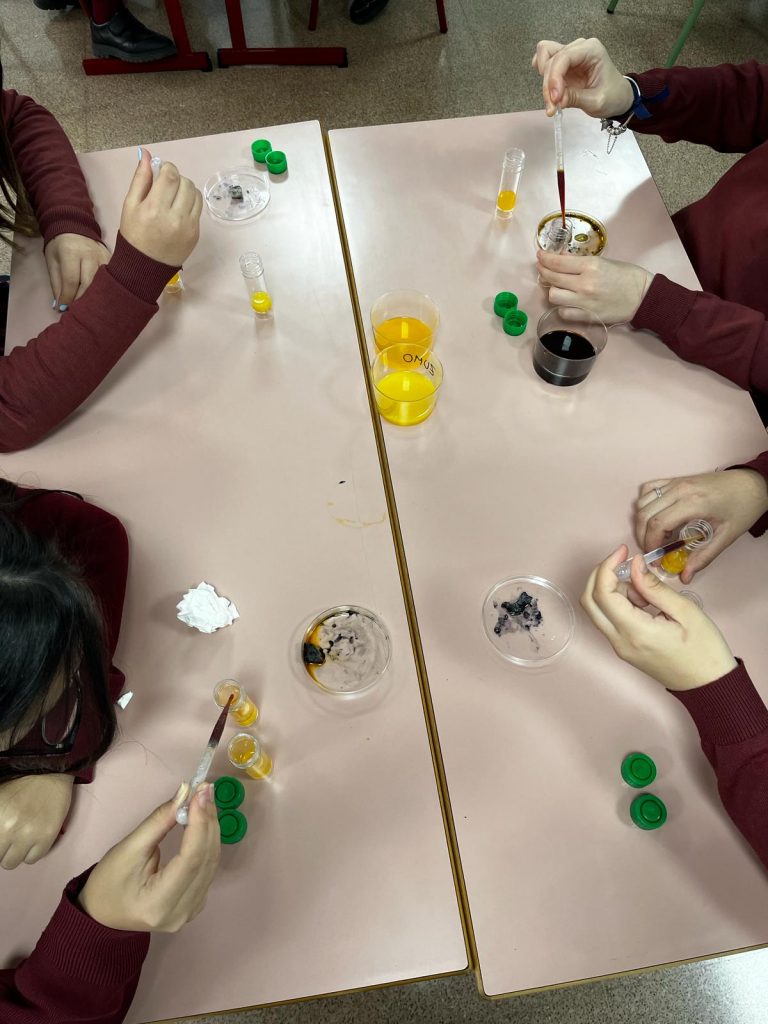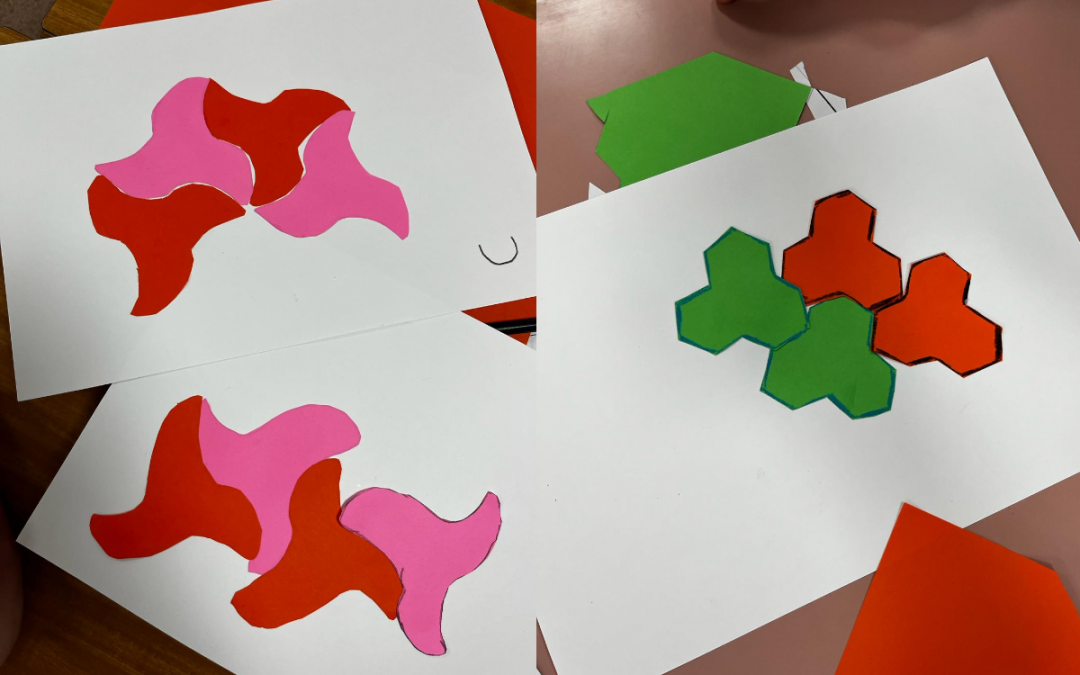The Didactic and Interactive Science Museum (MUDIC) has held several scientific-themed workshops at the La Purísima school in Callosa de Segura on Monday, March 25, 2024. These activities are framed in the actions “Workshops in schools”, in which that the different European entities of the MEDNIGHT project visit schools to interact with the students. They are also aligned with Sustainable Development Goal number 4: Quality Education.
The first of the workshops carried out was titled “Tessellations: Symmetries and mosaics”. In this workshop, aimed at 29 4th year ESO students, artistic creations were made with regular and irregular polygons. One of their properties is that by repeating them on the plane they can completely fill a region without gaps or overlaps. The fundamental purpose of the activity is to develop spatial thinking skills such as visual-motor coordination, figure-ground coordination, perceptual constancy, position perception in space, spatial perception relationships, visual discrimination and visual memory, as well as the construction of knowledge , geometric notions and concepts.
The second workshop given on the day was titled “Nutrition and Health”. In it, 25 3rd year ESO students explored nutritional labeling and the presence of sugars, vitamin C and starch in foods. Through practical examples and simple laboratory experiences they determined the presence of these substances in foods. They also studied diseases related to diet and the importance of health through diet.

The third workshop that was taught on the day was “Matemagia”. 28 1st year ESO students were involved in a series of surprising activities directly related to mathematics through magic. With the aim of awakening their interest in this discipline, they were invited to discover the trick behind the tricks, based on mathematical principles.
The fourth workshop given at La Purísima was the “Nanoscience” workshop, aimed at 30 2nd year ESO students. In it, the world of nanoscience and nanomaterials was introduced through simple, everyday experiences. They began by immersing themselves in the “nano” world with a meter that measures in nanometers. They continued experimenting with materials that have different properties depending on whether they are composed of macroparticles or nanoparticles. They also experimented with materials related to nanoparticles such as sun creams, anti-fog liquids, different plasticines or materials that change color according to temperature.

